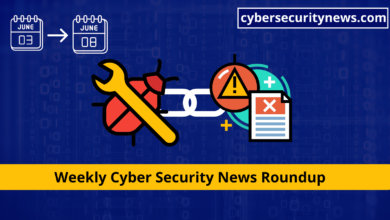strategies for protection — Retail Technology Innovation Hub

To stay cyber secure, stores must follow best practices and use advanced security measures.
Stores can protect themselves by training staff, having detailed response plans for incidents, and doing regular security checkups.
Training Your Staff and Raising Cyber Awareness
Your employees are the frontline defence against cyber threats. That’s why proper training is crucial for any cybersecurity plan.
With human error being the cause of over 80% of data breaches, ensuring your staff stays cyber aware is a top priority. Strong cyber training covers data policies, password best practices, and hardware/software security protocols.
By empowering your people with knowledge, you build a vigilant team ready to spot and stop threats before they escalate.
Engaging cyber training makes a real difference. Use real-world examples your staff can relate to.
Keep it interactive with Q&As, quizzes, and scenario-based exercises. And make it an ongoing effort – cyber risks constantly evolve, so training must keep pace.
With a proactive, employee focused approach, you’ll strengthen your human firewall against cyber attacks.
Developing a Solid Incident Response Playbook
Even with robust preventive measures, cyber incidents can still occur. That’s when having a clear, well practiced incident response plan pays off.
This detailed playbook outlines precise actions to contain threats, minimise the fallout, and swiftly restore normal operations post-incident.
Regular reviews ensure your plan aligns with emerging risks and evolving IT infrastructure.
An effective incident response strategy covers key areas like:
-
Assessing vulnerability points and setting plan objectives
-
Reviewing apps and systems to identify potential weak spots
-
Establishing roles and communication protocols for smooth coordination
-
Outlining steps for evidence gathering and forensic investigation
-
Developing processes to patch gaps and bolster defences post-incident
Remember, advance preparation is vital – you can’t formulate an effective response in the heat of a crisis.
With a pragmatic, frequently updated incident response plan, your team stays ready to rapidly neutralize cyber threats and protect vital business interests.
-
Do a review after an attack to see what happened and learn for the future.
-
Change the plan based on what you learned from the attack review.
-
Work with third-party vendors to have a unified plan for responding to cyber incidents. By doing these things, retailers can deal with cybersecurity threats and protect their systems and data.
Regular Security Check-ups and Testing
Regular security check-ups and testing are essential for robust cybersecurity. By finding potential cybersecurity risks within a retail company, these practices help manage those risks proactively.
Tests like checking if network areas are properly isolated confirm that different parts of a network are adequately separated according to security standards – this is crucial for maintaining strong cyber defences.
In addition to internal measures, thoroughly assessing risks from third-party vendors is key to mitigating external threats.
This involves ensuring vendors follow necessary regulations and frequently auditing their adherence to strict security policies.
It’s vital for preventing data breaches. By consistently evaluating and probing for system vulnerabilities, retailers can stay one step ahead in safeguarding against potential cyber attackers.
The role of technology in securing retail transactions
As more shopping moves online, tech tools keep your payment info safe. Apps encrypt and tokenize data to protect against hackers.
Encryption codes your details so bad guys can’t read them. Tokens swap payment info for random codes only stores can use. Pretty clever, right?
Let me show you some cool cyber safety tricks to keeping your money covered. It’s wild what’s out there nowadays.
Encryption and Tokenization Protect Your Payment Deets
Encrypting and tokenizing payment data is key for retail security. Encryption scrambles your info into a secret code only stores can crack.
Tokenization swaps payment numbers for unique random tokens during checkout. Hackers can’t steal what they can’t read!
For example, Point-to-Point Encryption (P2PE) locks up data as it travels from card readers to payment processors. It’s like a digital safe for your card details.
Using these security methods builds a solid wall against data breaches. Shoppers can buy worry free, knowing their payment info stays locked down tight.
Making Shopping Safe with Smart Tech
These days, AI and machine learning help keep stores secure. They can spot odd data patterns that might mean hackers are trying to break in. This gives stores a chance to stop cyber attacks before they happen.
As AI gets smarter, it’ll only get better at finding threats and dealing with them automatically. That way, stores can use people for other tasks while staying safe from hackers.
AI and machine learning are becoming more critical for store security. By catching threats automatically and handling them, this tech can free up workers’ time.
That means stores can focus on other jobs while still being protected from cyberattacks, even as hackers get sneakier. As the tech improves, it’ll keep getting harder for hackers to break in.



